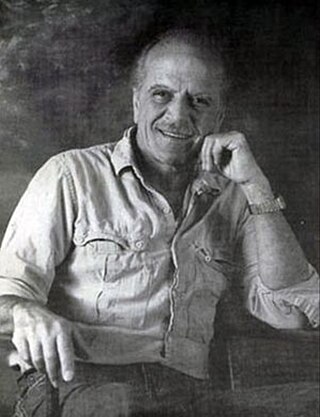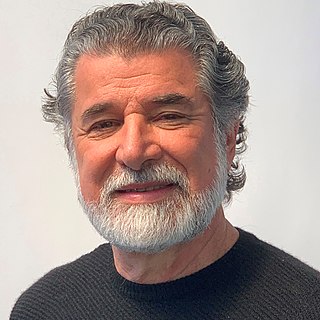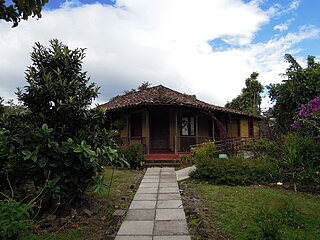
San José is the capital and largest city of Costa Rica, and the capital of the province of the same name. It is in the center of the country, in the mid-west of the Central Valley, within San José Canton. San José is Costa Rica's seat of national government, focal point of political and economic activity, and major transportation hub. San José Canton's population was 288,054 in 2011, and San José's municipal land area is 44.2 square kilometers, with an estimated 333,980 residents in 2015. Together with several other cantons of the central valley, including Alajuela, Heredia and Cartago, it forms the country's Greater Metropolitan Area, with an estimated population of over 2 million in 2017. The city is named in honor of Joseph of Nazareth.

Alajuela is a province of Costa Rica. It is located in the north-central part of the country, bordering Nicaragua to the north. It also borders the provinces of Heredia to the east, San José to the south, Puntarenas to the southwest and Guanacaste to the west. As of 2011, the province had a population of 885,571. Alajuela is composed of 16 cantons, which are divided into 111 districts. It covers an area of 9,757.53 square kilometers.

Rodolfo Abularach was a Guatemalan painter and printmaker of Palestinian descent.
Julieta Pinto was a Costa Rican educator and writer. She was a recipient of the Aquileo J. Echeverría Award.

Gonzalo Morales Sáurez was a Costa Rican painter. He studied in The San Fernando Academy in Madrid, Spain from 1970 to 1974. He is best known for his hyper-realistic works, and has exhibited his art in many museums and art galleries in Europe and the Americas.

Darío Escobar is a Guatemalan artist.

Tourism in Costa Rica has been one of the fastest growing economic sectors of the country and by 1995 became the largest foreign exchange earner. Since 1999, tourism has earned more foreign exchange than bananas, pineapples and coffee exports combined. The tourism boom began in 1987, with the number of visitors up from 329,000 in 1988, through 1.03 million in 1999, over 2 million in 2008, to a historical record of 2.66 million foreign visitors in 2015. In 2012, tourism contributed with 12.5% of the country's GDP and it was responsible for 11.7% of direct and indirect employment. In 2009, tourism attracted 17% of foreign direct investment inflows, and 13% in average between 2000 and 2009. In 2010, the tourism industry was responsible for 21.2% of foreign exchange generated by all exports. According to a 2007 report by ECLAC, tourism contributed to a reduction in poverty of 3% in the country.

Ibo Bonilla Oconitrillo is an architect, sculptor, mathematician and educator of Costa Rica. He has Costa Rican and Spanish nationality. He is known mainly because of the creation of Bioclimatic Buildings and his Monuments in Public Square.

La Sabana Metropolitan Park is located in downtown San José, Costa Rica. It is the country's largest and most significant urban park. La Sabana is considered "the lungs of San José" by Costa Ricans.
Sierra, locally known as Las Minas, is a district of the Abangares canton, in the Guanacaste province of Costa Rica. It is well known as a historical mining town of Costa Rica, located in the north west Pacific Region. It goes from an altitude of 210 meters to 1200 meters.

Yolanda Oreamuno Unger was a Costa Rican writer. Her most acclaimed novel is La Ruta de su Evasión (1948). Her 40 years of life were markedly divided into two phases: the first 20 years, filled with youth, beauty and happiness, contrasted sharply with the following years of tragedy, loneliness and sickness.

Italian Costa Ricans are Costa Rican-born citizens who are fully or partially of Italian descent, whose ancestors were Italians who emigrated to Costa Rica during the Italian diaspora, or Italian-born people in Costa Rica. Most of them reside in San Vito, the capital city of the Coto Brus Canton. Both Italians and their descendants are referred to in the country as tútiles. There were over 380,000 Costa Ricans of Italian descent, corresponding to about 7.5% of Costa Rica's population, while there were around 2,300 Italian citizens.

The Benemérito Lycée Franco-Costaricien is a French international school in Sánchez District, Curridabat, San José Province, Costa Rica. It serves levels until the final year of senior high school, terminale.
Gloria Bejarano Almada is a Mexican-born Costa Rican politician, public figure and former First Lady of Costa Rica. Bejarano, the wife of former Costa Rican President Rafael Ángel Calderón Fournier, served as the country's First Lady from 1990 until 1994.

The Academia Nacional de Ciencias is Costa Rica's Academy of Sciences. It was created as a “permanent forum for discussion and scientific analysis,” and serves both as an honorific society and a source of scientific advice for the government. Its mandate is to promote scientific culture and progress within Costa Rica, and collaboration between national and international agencies. It maintains membership in international organizations such as the International Council for Science (ICSU), the InterAmerican Network of Academies of Sciences (IANAS) and the Third World Network (TWN). Its headquarters are in San Pedro in the province of San José.

Santa Lucía is the fifth district of the Barva canton, in the Heredia province of Costa Rica.
Man Yu Fung Li, commonly known as Man Yu, is a Costa Rican artist, born in Hong Kong. She specializes in painting, but also incorporates multiple multidisciplinary media such as installation art, video art and performance art. Part of her work focuses on human anatomy, the different non-physical layers of the human being, humanism and respect for living beings.
Adrián Arguedas Ruano is a Costa Rican contemporary artist who works in painting, printmaking and sculpture.
Tatiana Muñoz Brenes is a Costa Rican art curator specializing in queer and transfeminist art. She graduated in Art History and Psychology from the University of Costa Rica, where she works as a researcher and teacher. She is a member of the Board of Directors of ICOM Costa Rica. She is a winner of the Fulbright scholarship, she is pursuing a master's degree in Museum Studies from the New York University.













